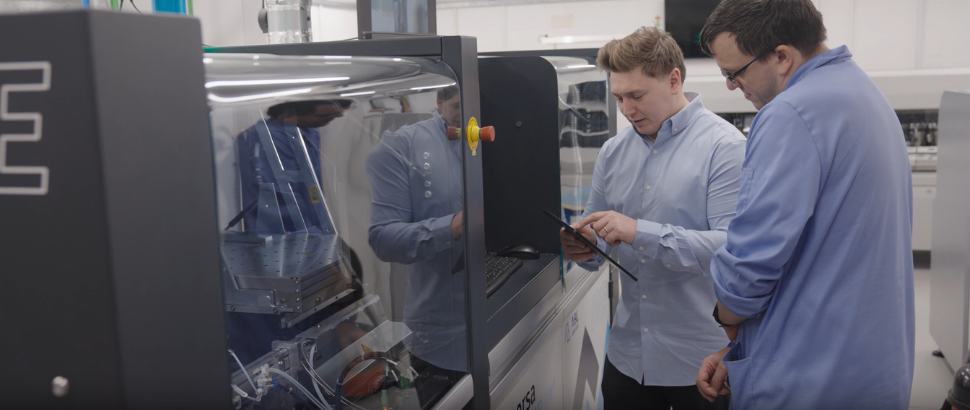News, Blogs & Articles

Why Your PCB Contract Manufacturer Should Source Your Components
Case Study
July 22, 2025
The simple answer is cost. Your PCB contract manufacturer can save you significant money on components through established distributor relationships and bulk purchasing power. But the benefits extend far beyond just price savings.
The Cost Advantage is Real
Contract manufacturers buy components in vastly different quantities than most design companies. Where you might need 1,000 units, your manufacturer is purchasing tens of thousands across multiple projects. This volume difference translates directly to:
Better pricing tiers: Distributors offer substantial discounts at higher quantities. A component that costs £2.50 in quantities of 1,000 might drop to £1.80 at 10,000 units – a 28% saving that your manufacturer can pass on.
Access to allocation: During component shortages, distributors prioritise their largest customers. Your manufacturer’s relationship means better access to hard-to-find components when you need them most.
Reduced minimum order quantities: Many distributors waive MOQs for established manufacturing partners, eliminating the need to buy excessive quantities of expensive components.
Established Distributor Relationships Matter
Your contract manufacturer has spent years building relationships with component distributors. These relationships provide:
Preferred customer status: Priority access to stock, expedited shipping, and flexible payment terms that individual companies rarely achieve.
Technical support: Direct access to distributor applications engineers who can suggest alternatives, identify obsolescence issues, and provide real-time market intelligence.
Supply chain visibility: Manufacturers receive advance notice of component availability issues, price changes, and product roadmaps that help prevent costly delays.
Beyond Cost: Hidden Benefits of Manufacturer Sourcing
Quality Assurance and Authentication
Contract manufacturers have established processes for verifying component authenticity. With counterfeit components increasingly common, this protection is invaluable. Your manufacturer can:
- Verify components through trusted distributor channels
- Implement incoming inspection processes
- Maintain traceability documentation for critical components
Obsolescence Management
Experienced manufacturers monitor component lifecycles and can suggest suitable alternatives before obsolescence becomes a problem. They often maintain approved vendor lists (AVLs) for common components, making substitutions seamless.
Inventory Management
Manufacturer sourcing eliminates the need for you to:
- Forecast component requirements months in advance
- Manage inventory carrying costs
- Deal with excess stock from over-ordering
- Handle component storage and handling requirements
Streamlined Supply Chain
Single-source responsibility means fewer purchase orders, invoices, and supplier relationships to manage. Your manufacturer coordinates all component delivery timing to match production schedules.
When Customer Sourcing Makes Sense
There are legitimate reasons to source components yourself:
Proprietary components: Custom ASICs, programmed microcontrollers, or specialised sensors that only you can procure.
Direct manufacturer relationships: If you already have established relationships with component manufacturers offering better terms than distributors.
Tight cost control: When you need absolute visibility into component costs for pricing or accounting purposes.
Specific supplier requirements: Automotive, medical, or aerospace applications with mandated supplier qualifications.
The Hybrid Approach
Many successful projects use a hybrid sourcing model:
- Customer sources: Proprietary components, critical long-lead items, and any parts with specific supplier requirements
- Manufacturer sources: Standard components, passives, connectors, and mechanical parts
This approach maximises cost savings while maintaining control over critical components.
Making the Decision: Key Questions
When deciding who should source components, consider:
- What’s your annual component spend? Higher volumes favour manufacturer sourcing
- How price-sensitive is your product? Cost-critical products benefit most from manufacturer purchasing power
- Do you have existing distributor relationships? Compare your terms with your manufacturer’s capabilities
- How complex is your BOM? More complex bills of materials benefit from professional procurement management
- What’s your internal procurement capacity? Sourcing components properly requires dedicated resources
Implementation Best Practices
If you decide on manufacturer sourcing:
Provide complete specifications: Include part numbers, manufacturers, acceptable alternatives, and any qualification requirements.
Establish clear approval processes: Define who approves component substitutions and how changes are communicated.
Maintain visibility: Request regular reports on component costs, availability, and any potential issues.
Set clear expectations: Define responsibilities for component quality, delivery, and any shortages.
Plan for contingencies: Establish procedures for handling component shortages or quality issues.
The Bottom Line
For most PCB projects, manufacturer sourcing delivers significant cost savings and reduces supply chain complexity. The combination of better pricing, established relationships, and professional procurement management typically outweighs the reduced direct control.
The key is finding a manufacturer with strong procurement capabilities and establishing clear communication processes. When done properly, manufacturer sourcing reduces costs, improves reliability, and allows you to focus on design and product development rather than supply chain management.
Ready to Explore Component Sourcing Options?
At ABL Circuits, we leverage our established distributor relationships and bulk purchasing power to deliver significant component cost savings to our customers. Our procurement team can evaluate your BOM and identify opportunities for cost reduction while maintaining quality and reliability.
Contact us today to discuss your component sourcing requirements and discover how our supply chain expertise can reduce your project costs and improve delivery reliability.
News, Blogs & Articles















